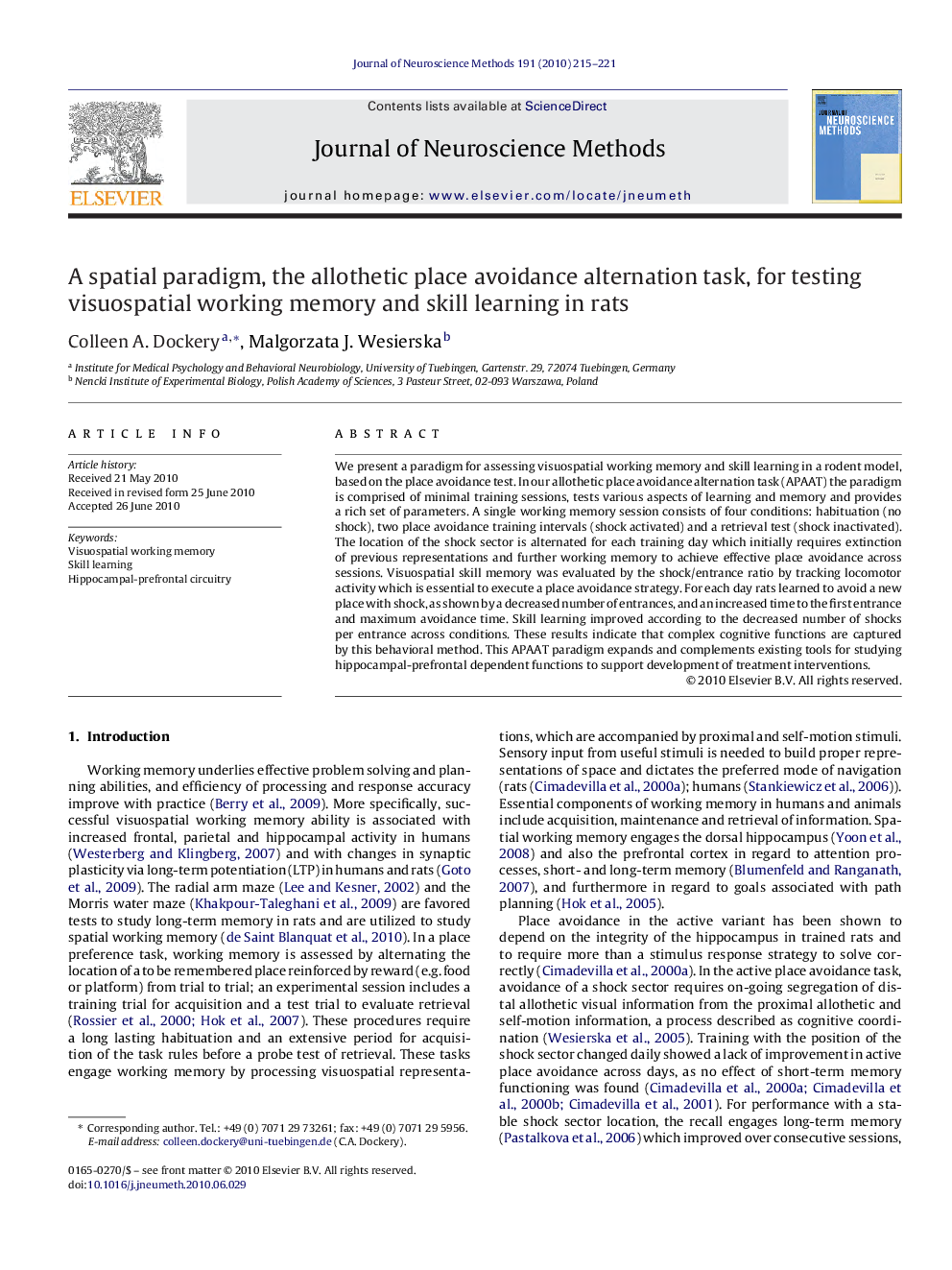| Article ID | Journal | Published Year | Pages | File Type |
|---|---|---|---|---|
| 4335573 | Journal of Neuroscience Methods | 2010 | 7 Pages |
We present a paradigm for assessing visuospatial working memory and skill learning in a rodent model, based on the place avoidance test. In our allothetic place avoidance alternation task (APAAT) the paradigm is comprised of minimal training sessions, tests various aspects of learning and memory and provides a rich set of parameters. A single working memory session consists of four conditions: habituation (no shock), two place avoidance training intervals (shock activated) and a retrieval test (shock inactivated). The location of the shock sector is alternated for each training day which initially requires extinction of previous representations and further working memory to achieve effective place avoidance across sessions. Visuospatial skill memory was evaluated by the shock/entrance ratio by tracking locomotor activity which is essential to execute a place avoidance strategy. For each day rats learned to avoid a new place with shock, as shown by a decreased number of entrances, and an increased time to the first entrance and maximum avoidance time. Skill learning improved according to the decreased number of shocks per entrance across conditions. These results indicate that complex cognitive functions are captured by this behavioral method. This APAAT paradigm expands and complements existing tools for studying hippocampal-prefrontal dependent functions to support development of treatment interventions.
Research highlights▶ A rat behavioral model to assesses visuospatial working memory and skill learning. ▶ This paradigm tests various aspects of learning and memory with minimal sessions. ▶ This paradigm provides highly sensitive parameters to disassociate cognitive, learning, sensorimotor, or motivational states. ▶ This paradigm advances the suitability, efficacy and validity of a rat behavioural model for basic and applied research.
